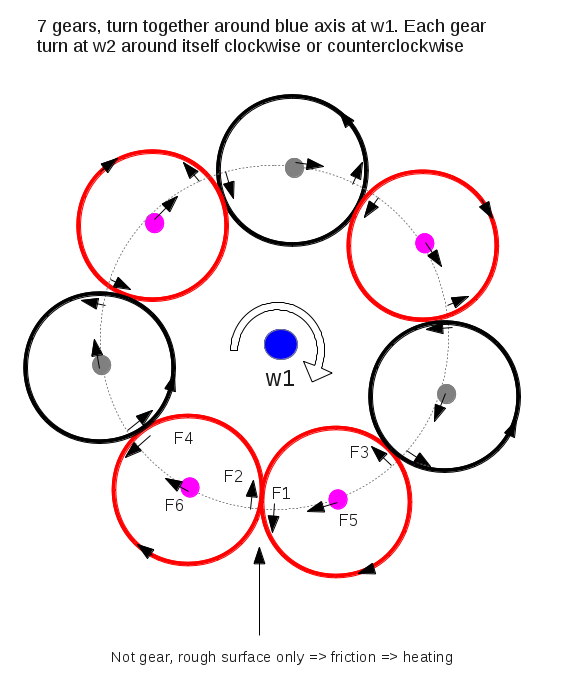As a newbie in physics I imagine this device and I would like to know why it can't increase its energy.
The device:
I imagine 7 gears in rotation around blue axis in clockwise. Each gear has a mass $m$. In the same time, gears are turning at $w2$ around themselves. One clockwise next one counterclockwise like gears. But like I have 7 gears (odd number), 2 gears rotate in the same direction (2 red disks at bottom). So, between these gears I would like only friction. This friction give heating and forces $F1$ and $F2$, others gears give forces too, $F3$, $F4$ etc. I try to draw all forces but maybe I'm wrong. For me, each magenta axis receive a clockwise torque from forces $F5$, $F6$ etc. that increases $w1$ but in the same time each disk decreases its kinetic energy. Sure, like that energy seems constant.
But: Now, if I want I can take a gear (or 5 gears except 2 reds where there is friction) without mass (or very low in practise). In this case, kinetic energy can't decrease for one disk (or five), but there is the same torque from forces $F5$, $F6$ and others on blue axis. In this case how energy can be the same (I count all energies, heating too)?
The cycle is:
- I launch gears at $w1$ and $w2$ without friction between red/red disks, this step need the energy $E$
- I set friction ON between red/red disks
- I count all energies, $E$ must be constant
How $E$ could be constant?

Note:
I guess no friction elsewhere than red/red disks surface.
I don't believe in perpetuum mobile but I imagine devices, and like puzzles to resolve, I try to understand how the sum of energy is conserved, like that I learn physics in the same time. It's like a game for me.
